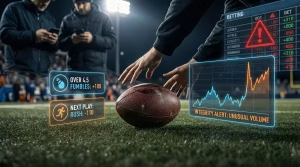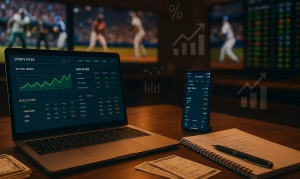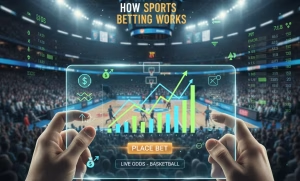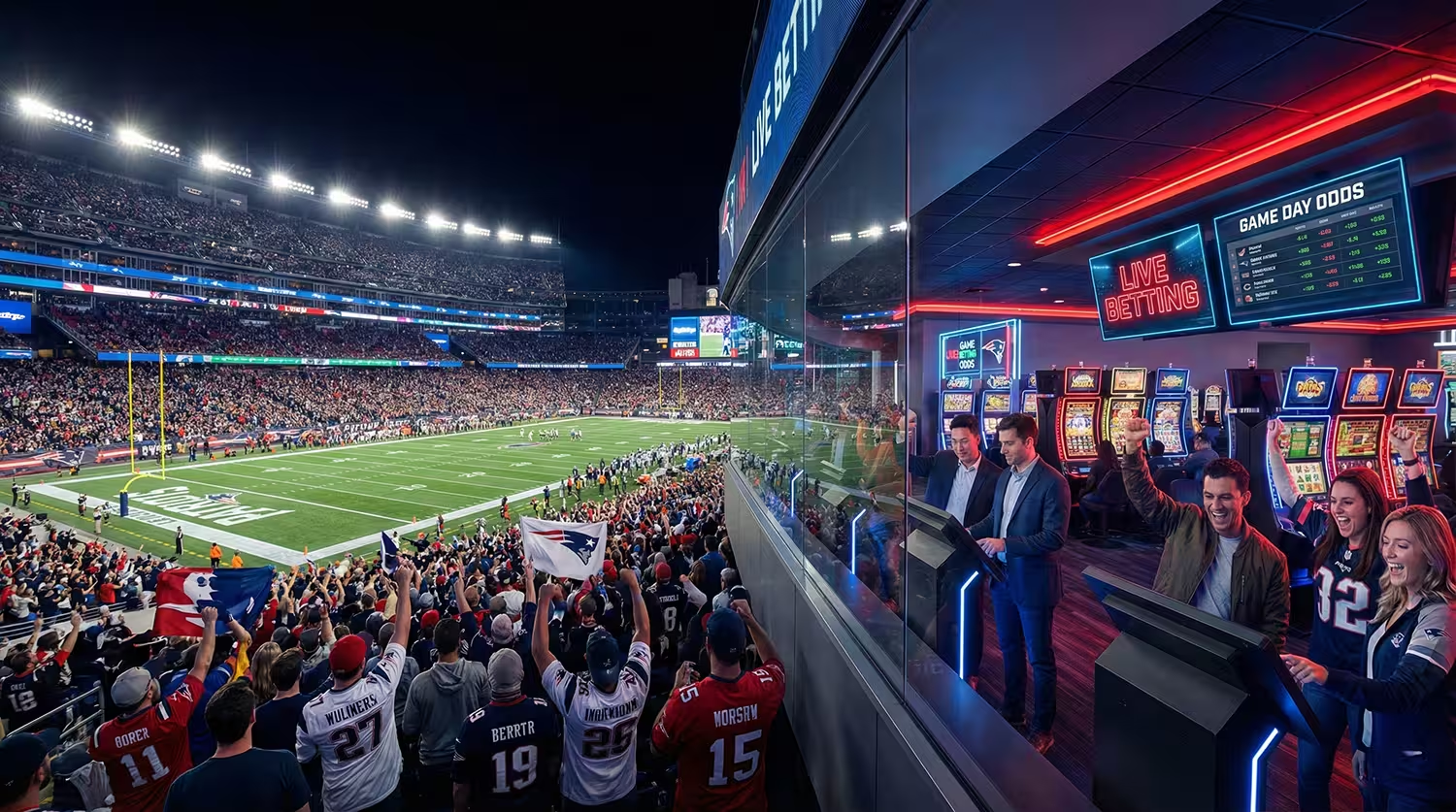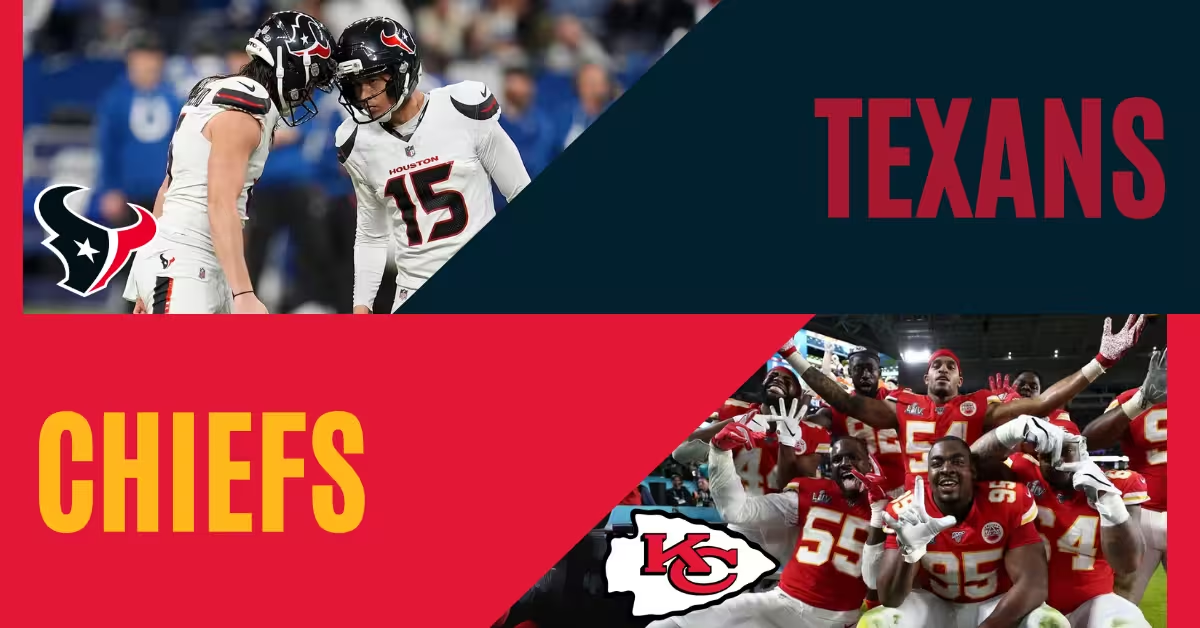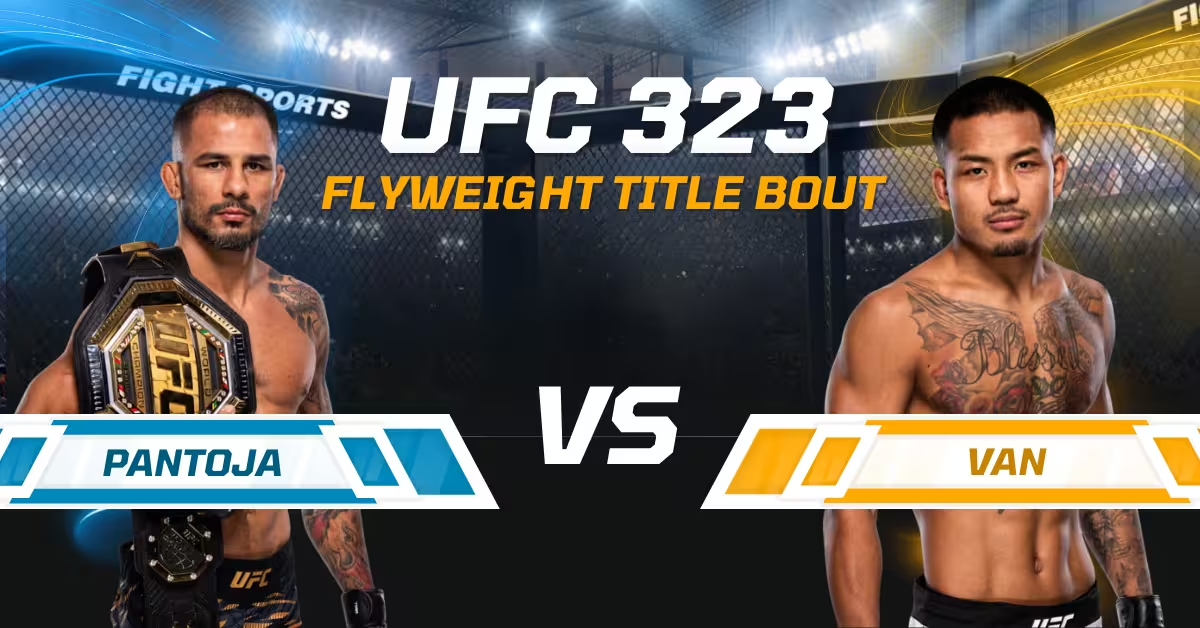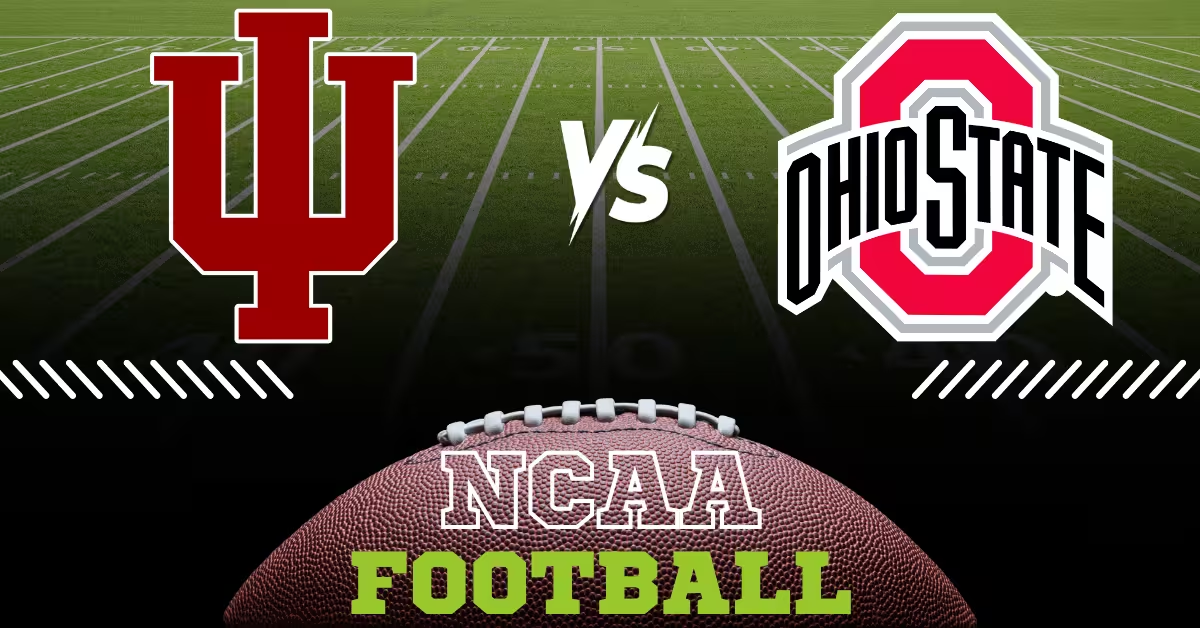Robot Umpires & MLB Betting: Could Automated Strike Zones Shift Run-Line Bets?
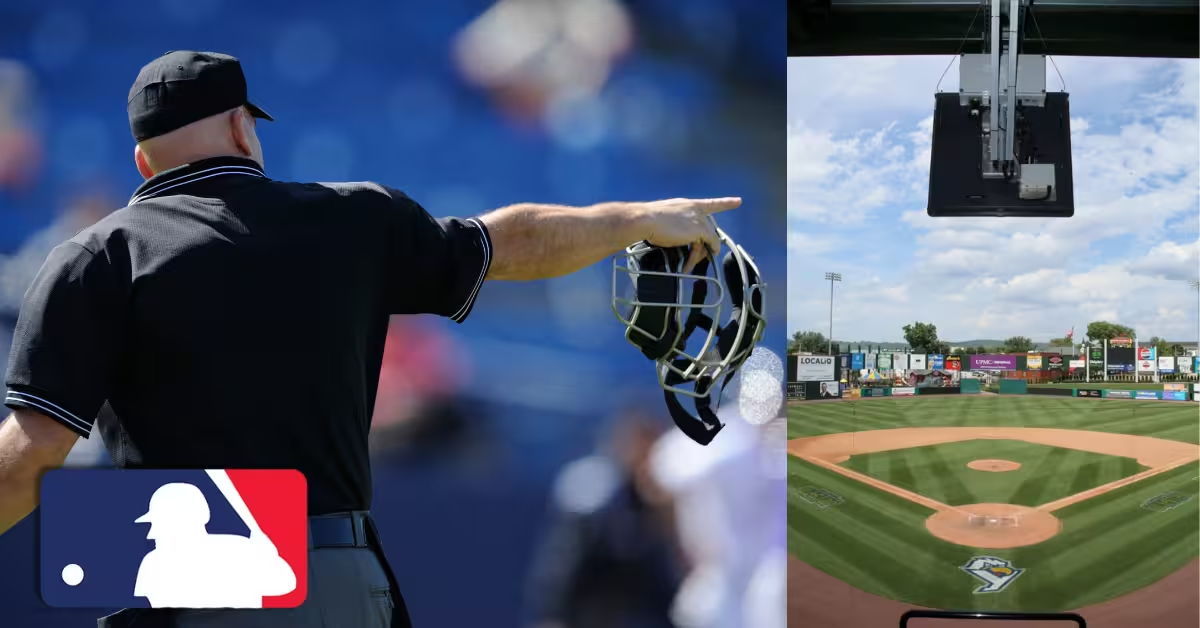
Robot umpires could be coming to an MLB ballpark near you. Did you think that AI was only coming for non-sports jobs? The baseball players are safe for now, as the engineer overlords haven’t figured out how to make a coordinated one.
But the human umps? Their job security isn’t so secure anymore. And we aren’t exactly mad at the thought of automated strike zones. Umpires are human and make mistakes, and strike calls in the MLB still are judgment calls.
One night, a pitch at the knees gets the call, and the next night it doesn’t. It’s all part of the game, but it alters everything from pitch counts to final scores.
MLB has been tinkering with automated strike zones for years, and what started in the independent leagues is now a regular feature at Triple-A, and the league has already tested it in spring training.
Will it be full automation or a challenge-based system? We don’t know, and the MLB hasn’t said. But if it does happen, what will it mean for bettors? And run lines?
When the zone doesn’t change from game to game, pitcher performance, scoring patterns, and betting angles will all look different. So we are gonna look at the early data, what’s been changed at the minor league level, and what bettors should be aware of as the strike zone gets standardized!
What Are Robot Umpires?
If you’re thinking about a cute lil robot standing behind home plate wearing a tiny uniform of the standard dark slacks and short-sleeved polo shirt, we are sorry to tell you that’s not what it is. We were disappointed as well.
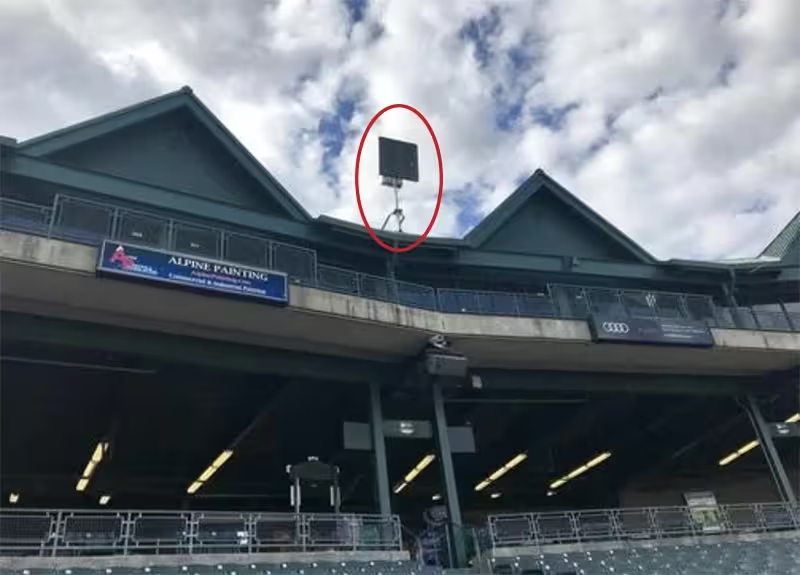
A robot umpire is a misnomer. As we said, we aren’t talking about R2D2 chilling at home plate. Nope, it’s an Automated Ball-Strike (ABS) system, and it’s a technology that uses radar or camera tracking to call pitches as balls or strikes with high precision. In practice, the system (like Hawk-Eye or TrackMan) measures a pitch’s location and relays the call to the human umpire’s earpiece instantly. The human umpire still signals the call, but they are just following the machine’s calls.
Robot umps have been tested extensively at the lower baseball tiers. The independent Atlantic League first used a full ABS in 2019, with a Doppler radar “black box” perched above home plate to call pitches. Since then, MLB has trialed ABS in affiliated minors: the Low-A Southeast League in 2021, some Triple-A games in 2022-2024, and the Arizona Fall League. The technology adapts for each batter’s height and stance, so a tall hitter’s zone is bigger than a shorter player’s, and it’s the same as the rulebook strike zone.
When could we see the majors see robot umps? MLB Commissioner Rob Manfred has indicated the earliest would be 2026 for a rollout. In Spring Training 2025, MLB used the ABS challenge system in about 60% of exhibition games as a high-profile test. Those spring games allowed each team two challenges (retaining them if successful), and about 52% of challenged calls were overturned by the ABS, implying umpires were indeed missing about half of the disputed pitches. While the full robotic strike zone won’t be part of the 2025 regular season, the writing is on the wall: the robot umps are coming, one way or another.
MLB’s experiments have evolved into a hybrid challenge system instead of total automation. In 2023-24, Triple-A leagues alternated between two modes: some games used full ABS (every pitch called by the system), and others used an ABS challenge system where the human umpire called the game, but teams could appeal a few ball/strike calls to the computer. The feedback was that players and fans strongly prefer having a human ump with limited tech assist over a completely robotic strike zone. The challenge system has been deemed a better balance between accuracy and the traditional “feel” of the game. By late 2024, MLB “pushed aside” full automation at Triple-A in favor of challenges, after observing some unintended side effects of the pure ABS (like an uptick in walks that we’ll talk about).
How Run-Line Betting Works in MLB
Ok, before we get into the betting impact, we need to do a quick refresher on run-line bets. A run-line is baseball’s version of a point spread. In a typical MLB game, the favorite is -1.5 runs (meaning they must win by 2 or more runs to cover), and the underdog is +1.5 runs (they can lose by 1 run and still cover, or, of course, win outright). This 1.5-run spread is almost always used as the default line, which is why you’ll see something like Yankees -1.5 / Red Sox +1.5 with associated odds. It adds extra complexity beyond the moneyline (which is just picking the winner) because it factors in the margin of victory.
How Run-line Bets Differ from ML and Totals
Run-line bets differ from moneyline bets in that you’re not just asking “who will win?” but “who will win, and by how much?”
If the favorite wins 3-2, a moneyline bettor on the favorite cashes in, but a run-line bettor on the favorite loses (since 3-2 is only a one-run win, not covering the -1.5 spread). Conversely, run-line underdog bettors often win bets on close losses. It’s a really popular wager type because it can turn heavy favorites into more profitable bets (if you’re confident they’ll win by 2+), and it gives underdog backers a cushion in a typically low-scoring sport where one run is huge.
Main Betting Factors
There are a lot of factors that influence run-line betting decisions.
- Pitching matchups are paramount; a great starting pitcher can suppress scoring, and that makes it harder for a favorite to pull away by 2 runs.
- Bullpen quality and late-inning tendencies matter if leads get extended or blown.
- Ballpark factors (a game at a hitter-friendly park like Coors Field vs. a pitcher-friendly park like Petco Park).
- The weather (wind blowing out vs. in) can sway expected run totals and thus the likelihood of a big margin.
Bettors also consider umpire tendencies, and we’ve now come full circle! There are umpires who have a reputation for a tight strike zone (favoring hitters and runs), and others who call a wide zone (favoring pitchers and unders).
All of these tendencies can influence scoring: If they call more balls, which results in additional walks, more runs can score. Other umpires can call fewer balls, and that could reduce the number of runs scored. Astute bettors will check who the home plate umpire is and adjust their over/under or run-line bets accordingly.
An analysis of umpire stats found that nearly half of the umps studied in a season showed a bias toward either overs or unders in total runs. For example, in 2010, Fieldin Culbreth’s games went over the betting total ~63% of the time (suggesting a smaller zone/hitter-friendly), whereas Doug Eddings’ games went over only ~33% (a big zone favoring pitchers and lower scores).
Sportsbooks are aware of these patterns and will shade totals for extreme cases, but it’s an extra variable in the betting equation.
The main point is this: human variability in calling balls and strikes is one of those factors that can change an MLB game’s run distribution. A generous strike call in a pivotal moment can kill a potential rally, and a tight zone can extend innings and boost scoring. That’s why a move to an automated strike zone stands to impact betting! It totally eradicates one source of volatility that bettors and oddsmakers have historically baked into betting lines.
Human Umpires’ Impact on Game Outcomes
Human umpires, for all of their experience and training, are not perfect or consistent. Every fan has seen a strike three call on a pitch a foot outside, or a pitcher lose a strike because the ump didn’t like the height or the catcher’s framing.
And inconsistencies aren’t anecdotal; they show up in the data.
In the 2024 MLB season, Statcast data showed that 10.9% of pitches thrown in the rulebook strike zone were called balls by umpires, and 6.3% of pitches outside the zone were erroneously called strikes. In other words, about 1 in every 10 true strikes was missed, and about 1 in 16 balls was mistakenly gifted as a strike. Over a full game with, say, 300 pitches, that’s on the order of 20+ potentially incorrect calls. Each one could change an at-bat outcome, which can snowball into changing innings and final scores.
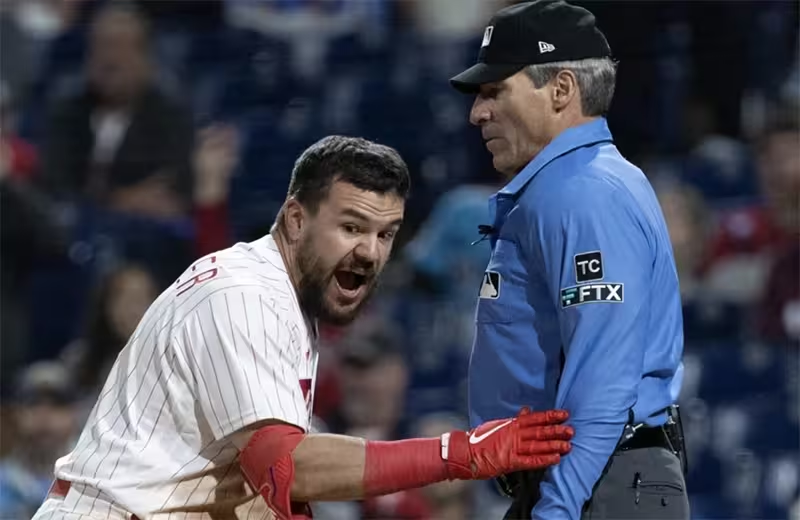
Different Umpires, Different Calls
There’s also a big variation between different umpires. The strike zone is not actually a fixed rectangle in practice; it’s a human judgment influenced by habit and perspective. A study of umpire strike zones from 2008–2016 found that some umps consistently call many more strikes than others, especially on the edges of the zone.
Veteran ump Bill Miller was shown to call about 1,100 more strikes than the average umpire over a span of years; roughly 4 extra strikes per game, often on the fringes of the zone. He was the quintessential “pitcher’s umpire,” giving pitchers the benefit of the doubt on borderline pitches high, low, inside, and outside.
On the other end of the spectrum, there are umpires like Gerry Davis and Greg Gibson who have notably tight zones (sometimes called “hitter’s umpires”), calling fewer strikes than average, especially around the edges. The difference from one ump to another can be huge: analysis of 2017 data indicated the most pitcher-friendly ump was calling about 10 more strikes per game than the most hitter-friendly ump. That’s a huge factor in how a game might play out, as more strikes generally mean quicker outs, fewer walks, and typically lower scoring.
The tendencies impact not only totals but also how runs are distributed, which ties into run-line outcomes. An umpire with a tiny zone might contribute to more baserunners and potentially more big innings (as pitchers struggle to get strike calls and may have to throw easier pitches over the plate).
But an ump with a really generous zone could keep games tighter by suppressing offense, and teams might score less frequently, perhaps leading to more one-run games rather than blowouts. Bettors track umpire stats: historically, you could find umpire-by-umpire records against the total (over or under) and even how often favorites cover the run line under certain umps. As we said, almost half of the umpires in one sample leaned notably toward either higher or lower scoring games.
Extreme cases like Jim Reynolds (64% of his games went Over the total in 2010) or Greg Gibson (only 22% went Over, meaning 78% Under) show that an ump’s strike zone consistency (or lack thereof) can absolutely influence and change the margins of victory.
Famous (or Infamous) Examples
And of course, there are the headline-grabbing examples of umpire mistakes that altered baseball games. In a nationally televised game in April 2022, veteran ump Angel Hernandez had only 77% accuracy on strikes (well below the ~93% league average) and “rung up” multiple batters on pitches clearly outside the zone.
Phillies hitter Kyle Schwarber famously blew up at Hernandez after a called strike that was nowhere near the zone, and it was a demonstration of how a human umpire can inject chaos into such a crucial moment; blown calls can directly affect whether a team extends a lead or falls behind. Bettors who had the Phillies -1.5 in that game (just as an example) might feel that a missed ball four call, which should have been a walk (but became a strikeout), robbed them of a potential rally to cover the spread.
The human element in umpiring introduces variability in game outcomes, and it’s a variability that skilled bettors try to account for, but with robot umpires? That would be eliminated.
How Robot Umpires Could Change the Game
If MLB does end up changing to automated strike zones, we’d see an immediate and big shift in how games are played. The most obvious? The change is in strike zone consistency.
Why? Because a robo-ump doesn’t “expand” the zone for a pitcher on a hot streak or tighten it because a catcher is bad at framing. It calls the rulebook zone, pitch after pitch, with the same calibration for all. Human umpires call pitches probabilistically on the edges; sometimes a strike, sometimes a ball on identical pitches, whereas an automated system will make the same call every time for a pitch in a given location. Those borderline low-and-away sliders that one ump might call a ball and another a strike will have a uniform verdict.
Less Borderline Discrepancies
What could this mean in practice? For one, fewer borderline discrepancies. There will be no more “make-up calls” or individual ump decisions where a pitch is a strike in the 1st inning but not in the 9th. Over the course of a game (and season), that should decrease the variability in count outcomes.
A borderline 3-2 pitch with bases loaded will be called correctly, one way or the other. This could lead to less argument-induced drama, but more importantly for competition, it means players will adjust to a stable zone. Hitters won’t have to bother holding up their hand asking, “was that high?” because they know that the machine is precise. Pitchers could attack the exact top/bottom of the zone with more confidence, knowing they’ll get the strike if they hit it (and conversely, knowing there’s no hope of an ump giving them an inch off the plate anymore).
Player Performance
From a performance standpoint, we can only speculate on which types of players benefit or suffer. Let’s think about pitchers first. A strikeout pitcher (one with good velocity or nasty stuff that catches the zone) could see a benefit: if they can paint the real edges, they’ll get those calls consistently.
Some power pitchers throw rising fastballs at the top of the zone that occasionally get ruled balls by a human ump who perceives it as too high, but a robot will call those strikes if they nip the zone, potentially increasing high strike calls. And finesse pitchers or “nibblers” who succeed by getting hitters to chase just outside the zone or by relying on a catcher stealing strikes might lose an edge.
With ABS, a pitch that is two inches off the plate will never be called a strike (whereas a good framer and a friendly ump might have gotten that call before). An aspect that players disliked about full ABS was that it removed the art of pitch framing; catchers could no longer influence calls. Those catchers (and their pitchers) could no longer “steal” strikes on borderline pitches by presentation.
ABS Trials
There’s evidence that in the ABS trials, pitching dynamics did shift. In some early uses of full ABS, walks increased by a lot. MLB executives explained that in Triple-A games with full automation, walks became more prevalent, causing games to drag on longer despite the pitch clock.
Why more walks? Likely because pitchers couldn’t get those generous calls on borderline balls, so hitters were more often awarded walks on close pitches that a human might have called a strike. There are also reports that strikeouts actually dipped with the automated zone in certain minor league samples.
A Baseball America analysis of Triple-A data indicated the strikeout rate went down a little, but the walk rate went up, and that’s not exactly the outcome many expected, but it does suggest the zone called by the robot was tighter (or at least different) than what many umps were calling.
In the International League (Triple-A East), runs per game rose from about 4.98 to 5.50 after introducing ABS, walks increased from 4.0 to 4.8 per 9 innings, and hits ticked up as well. This aligns with the idea that a perfectly enforced zone would favor hitters in some ways, certainly in drawing walks, if not in hitting. It’s worth noting MLB adjusted the strike zone dimensions in the ABS system a few times to try to get the “right” balance, so not all ABS zones are identical. A too-big zone would favor pitchers excessively, a too-small zone vice versa. They’re looking for a happy medium that matches the intended rulebook zone without crushing offense or inflating it.
Another expected effect is a decrease in those game-altering “what if” moments that are set off by bad calls. Think about blow-up innings; sometimes a missed strike three leads directly to mayhem.
If an ump misses a strike call that would have been the third out, the at-bat continues, and the batter hits a 3-run double. With ABS, that third out is called correctly, the inning is over, and the rally is prevented. In theory, fewer big innings will be fueled by umpire mistakes, because those mistakes are gone. This could mean more predictable scoring progressions. It’s not to say that big innings won’t happen (they will, via hits and legit walks), but they won’t happen because an umpire gave a free pass or a free strike.
ABS will also prevent situations where a batter was mistakenly called out on strikes on ball four; those innings will now continue when they should have, possibly creating rallies that were unfairly halted before. The net effect is hard to quantify, but overall? The outcomes should lean more toward what the players earn, instead of what an umpire mis-sees.
Could automated zones lead to more offense or less? The early data and player feedback suggest more offense (more walks, slightly higher on-base, maybe slightly longer games) unless the zone is adjusted. MLB saw that as a negative when the pace of play suffered, which is partly why they currently favor the challenge system (let the human call it and only fix the egregious misses).
But regardless of offensive levels, the key is consistency and reduced variance. The day-to-day fluctuation caused by “which ump is behind the plate” would pretty much vanish if every game had the same calibrated zone or the ability to challenge bad calls.
Implications for Run-Line Bettors
From a betting perspective, a world with robot umpires? It’s a world with one less variable (and one less source of randomness) in each game. Below are 5 big-picture implications for run-line bettors!
Decreased Volatility in Scoring Margins
If each game’s strike zone is standardized, we could see more consistent scoring ranges. Umpires won’t be squeezing one pitcher one night and giving a wide zone the next. In theory, this could lead to results that are more in line with the team’s true talent and other factors, rather than occasionally being skewed by an umpire’s influence.
For run-line bets, reduced volatility could mean favorites cover the -1.5 spread at a more predictable rate (depending on their actual superiority), and underdogs get blown out or keep it close based more strictly on skill, not a friendly strike zone. Outcomes might cluster a little more closely around the expected values since an element of randomness is removed. But decreased volatility also means tighter betting lines. Sportsbooks will adjust their odds to the more stable environment, leaving bettors fewer soft spots to exploit. If games become easier to predict, any edge a bettor has will shrink because the bookmakers can predict them better, too!
Better Data Modeling and Handicapping
For the bettors who rely on analytical models to predict games? An automated zone is a dream come true because it’s an elimination of randomness. Currently, a model has to account for umpire tendencies, but with a uniform ABS, today’s handicap (and the sportsbook’s odds) wouldn’t need to worry about who the ump is.
As a result, bettors can put more weight on core factors like the pitchers, lineups, and weather without the wild card of umpire inconsistency. In the early days of ABS introduction, this could be an opportunity: oddsmakers will certainly update totals and run-line pricing based on any league-wide offensive shifts, but they might under- or over-estimate the impact initially. A sharp bettor who studies the minor league data might project that scoring will rise X% due to more walks, and could hammer run-line underdogs if they believe more runs = more chances for the +1.5 side to cover (since higher scoring games sometimes produce closer percentage margins, except in extremes).
But if scoring drops due to a bigger zone, a bettor could focus on favorites covering (-1.5) in lower-scoring, more one-sided games. The point is, early adopters could find an advantage before the market has figured it out. But that edge? It might not last long.
Line Movement and Odds Efficiency
Once the ABS system is established, it will incorporate all known effects (walk rate changes, etc.) into their lines. Any traditional angles like “this ump tends to produce overs, so I’ll bet the over” disappear, because that angle is gone with the ump’s influence.
What remains is more “pure” data. In a way, this levels the playing field between sharp and casual bettors on that front. Those obscure stats about how often Umpire X’s games land one run apart versus two runs apart will be obsolete. The sportsbooks will be cautious early on, and we could see slightly higher totals or slightly inflated odds on certain props until there’s enough data, but by the time robot umps are the norm? The betting market will likely be quite efficient in pricing in the effects. The days of sneaking an Over bet because you know a certain ump calls a tiny zone may be gone for good.
New Angles to Consider
That being said, the game will evolve, and bettors can look for new angles. We could start evaluating pitchers in ABS environments. Some pitchers may have a hard time adjusting, like a starter vet who got by on getting calls just off the black. If he can’t get those anymore, maybe he issues more walks or has to throw more hittable pitches, making him a fade on run-line bets, and you might bet against his team covering, or take the other team’s run line because he could be hit hard or keep games closer than before.
And a flame-throwing strike-thrower could thrive! If he was already pounding the zone, now he gets every borderline strike as well. Bettors could target such pitchers in run-line bets, expecting their team to win by a larger margin because of a pitching edge that’s fully realized with ABS.
Another angle? Patient hitting teams might very well benefit from ABS. If you have a lineup full of players with good strike-zone discipline, they will draw even more walks when the zone is robotically enforced (since borderline calls that might’ve been called strikes now become guaranteed balls if outside). Those extra baserunners would translate to more runs and more covers on the -1.5 run line if that patient team is favored. Or if two patient teams play each other, maybe you lean Over instead of the run-line, expecting a higher-scoring close game with lots of walks.
Impact on 1-run Games
A really interesting question is if robot umps will increase or decrease the frequency of 1-run games (which is directly relevant to run-line bets, because a 1-run margin is the razor’s edge between winning and losing most run-line bets).
If the offense increases (more walks, etc.), one would think that blowouts could become more common (more runs available to create large margins). But a consistent zone might actually prevent some big crooked-number innings, which could keep scores closer. It could also mean a leading team can’t rely on an ump to expand the zone to help them get out of a jam; they’ll have to earn every out, and that gives trailing teams more comeback opportunities.
Yes, it’s kind of a paradox, and we’ll need to see real data once it’s implemented to know. But run-line bettors should be super mindful: if the distribution of victory margins shifts even slightly, it changes how you should price those -1.5 or +1.5 bets. If historically road favorites win by 2+ runs, say, 45% of the time, and after ABS, they win by 2+ runs only 40% of the time, that’s a big deal in setting run-line odds.
Possible Changes in Betting Strategy
Assuming that automated strike zones do become a reality, bettors will have to adjust their strategies! Look below for some changes to think about if it does happen.
Target (or fade) High Strikeout Pitchers
As we said, pitchers who generate lots of swings-and-misses or looking strikes in the zone could become even more effective. Early on, one could bet on teams with power arms to cover the run line.
If Team A’s ace is a big strikeout guy, under ABS, he might rack up Ks and mow through lineups on the reg, making it more likely Team A wins by 2+ runs.
And you could fade finesse pitchers who lived on the edges. These are the types who see pitch counts soar and get into trouble with walks or hitters sitting on predictable strikes. If a known “edge-nibbler” is starting, a bettor could take the +1.5 on the opponent, as they’re expecting a closer game or an upset, because that pitcher can no longer get those cheap strikes and will give up more baserunners.
Monitor Walk Rates and OBP
Bettors should really pay close attention to which teams draw a lot of walks and which pitchers issue walks. Under a robo-zone, patient hitters will probably do even better.
A team that’s patient would be an excellent bet on the run line as an underdog, because they can stay in games by drawing walks and putting pressure on (preventing the favorite from pulling away easily). Or as a favorite, a patient team can blow a game open with walk-filled innings. For prop betting, things like over/under on total walks, or player walk props, could become super attractive in ABS games.
Totals and Alternate Bets
We know that a lot of bettors will initially shy away from run lines until the effects are clear, instead focusing on totals or derivative markets like team totals and props.
If ABS creates a higher baseline of walks, overs on totals might hit more often until lines adjust. If it somehow lowers scoring (due to more strikes called), then unders become the play. Instead of picking a side to win by 2, you could find value in betting a team’s total runs over or under, if you identify they are particularly helped or hurt by the new zone. Maybe there’s a team with free swingers (who currently suffer under human umps because they chase anyway) who won’t be helped by ABS; they’ll strike out or get themselves out regardless. This kind of a team will continue to not score much, so betting their team total under or even taking them -1.5 less often (if they’re the favorite) could be smart!
Consider the Umpiring System in Play
During any transition period, it’s possible that the MLB could implement the challenge system in some games (or some parks) and not others, or the postseason could differ from the regular season at first.
Bettors will need to know the rules for each game! During the Triple-A in 2023, all games switched to the challenge system mid-season, but before that, some days were full ABS and some were human. If MLB did a staggered introduction (say, ABS challenge in certain series or as an experiment), bettors should absolutely factor that in.
A game with full ABS would have a different run environment than a game with a human umpire. Even looking ahead, if MLB uses the challenge system (where only a few calls get changed), the impact is smaller than full ABS. So a bettor’s strategy can differ: under a challenge system, you might still handicap a little based on the scheduled umpire (since 90%+ of calls are still made by humans and only obvious misses get fixed). Under a full ABS, you ignore the umpire’s identity. Staying informed on how the games will be officiated will be a new part of bettors’ daily routines.
Adjust In-game Betting Decisions
In-game (live) betting could also be affected by ABS! The strike zone consistency could make it easier to predict outcomes once you see which pitcher “has it” or not on a given day. If a normally wild pitcher is pounding the zone (and getting strikes), you could bet his team to hold a lead on the run line. And if a team that’s known for patience isn’t drawing walks (maybe the opposing pitcher is exceptionally on with his control that day), you would steer clear of betting that underdog +1.5 live because their usual advantage isn’t materializing.
All of the above strategy shifts boil down to one thing: relearning the nuances of baseball betting in a landscape where one major variable, the umpire, is neutralized. It’s sort of analogous to how bettors had to adjust to the NL adopting the designated hitter or the new extra-inning rules; those changed scoring and strategy, and thus betting dynamics. Robot umps will probably have a similar learning curve.
What the Data Says So Far (Early Trends)
While we don’t have any major-league data for robot umps, the minor league trials give us some clues. We’ve already talked about the main stats: more walks, possibly fewer strikeouts, and a slight increase in runs were observed in some ABS implementations. But we can recap a few early trends from where it’s been used!
Triple-A 2022-2023
In one Triple-A league, after introducing the automated zone, walks went up around 0.8 per game (per team) and strikeouts were roughly flat or dipped slightly, resulting in about a half-run increase in scoring. This suggests that pitchers couldn’t get as many borderline strike calls, putting more men on base via walks. But it didn’t produce a massive offensive explosion, only a moderate bump. Hitters weren’t all of a sudden teeing off for 10 runs a game; they were just reaching base a little more often via the base on balls.
Atlantic League 2019
In the initial indie-league trial, qualitative reports said players were intrigued but had complaints about certain pitches being strikes that never were before (like breaking balls that clip the very bottom of the zone). Statistically, an article from The Ringer noted that the Atlantic League saw strikeout and walk rates rise slightly when ABS was first used, but overall offense (batting average, hitting) stayed almost unchanged. The shape of offense shifted (more Ks and BBs, fewer balls in play), but it didn’t dramatically alter the runs scored.
Player Reactions
Pitchers and hitters have commented on robot umps in minor league play. A common sentiment from pitchers is frustration at the “weird” strike zone.
Red Sox pitcher Nick Pivetta, after a Triple-A rehab start under ABS, said: “I hate it. It’s terrible. Hopefully it never comes [to MLB]. The strike zone is just weird, it just doesn’t match the baseball.”
Hitters have complained as well about high strikes or breaking pitches that clip the zone late, which are things umps often call balls but ABS won’t miss. This says that there will be an adjustment period for players, and it’s a window where some teams will suffer and others benefit until everyone adapts.
Challenge System Data
MLB’s spring 2025 test of the ABS challenge system revealed some interesting stats, too. Teams only challenged about 2.6% of all called pitches (so 97% of calls stood unchallenged), and about 52% of challenges resulted in overturned calls (meaning the ump was wrong on roughly half of the ones players thought were wrong). Catchers were the most successful challengers (winning 56% of their challenges) compared to pitchers (41%), likely because catchers have the best view and sense of the zone. For bettors, if the challenge system is in play, it means that some of the worst calls will be corrected, but some will still occur (you can’t challenge everything, just a few per game). So the impact on run-lines under a challenge system could be smaller, as it trims the extreme misses but doesn’t make every call perfect. Full ABS would be a bigger step-change.
Runs and Margins
It’s way too early to conclude how margins of victory change. But one could look at the distribution of scores in ABS vs non-ABS games in Triple-A for clues. If ABS games had slightly higher variance in scoring due to more walks, or maybe lower variance due to consistent zones, these are the things that data scientists are studying.
One thing we do know? With human umps, about 28-30% of MLB games historically are decided by one run. If robot umps alter that percentage even a little, it changes run-line outcomes.
Could This Actually Help Bettors?
A consistent strike zone takes one unpredictable element off the table. And for those bettors who rely on data and matchup breakdowns? That’s a very good thing. Fewer surprises behind the plate mean outcomes line up more closely with what the numbers suggest.
But that also cuts both ways! If the zone becomes easier to account for, sportsbooks will adjust quickly, and any short-term edge could dry up, so it could be a lot harder to find mispriced lines.
The shift could make things more approachable for newer bettors. Because there are fewer hidden variables in play, projections become cleaner, and the gap between casual and experienced players might shrink, at least for a little while.
The Robot Umps Are Coming: Is Your Run-Line Strategy Ready?
If we’re being honest, the only thing we love more than a bench-clearing field brawl is when a coach loses their sh*t on an umpire before they’re ejected from the game. We’ll miss that!
But robot umpires remove that human error factor that makes players get in their faces, and that’s a good thing (for the umps and the game as a whole).
Once the strike zone stops changing from night to night? Betting on the margins won’t feel quite the same. The usual ump-driven change in baseball game outcomes could be a thing of the past.
Run-line outcomes will always depend on pitching matchups and lineup strength, but plate discipline and pitcher control will matter more. If and when robot umpires happen, watch how teams adjust in those games! Seeing any trends early on will give you an advantage if this system ever does make it to the show.

Alyssa contributes sportsbook/online casino reviews, but she also stays on top of any industry news, precisely that of the sports betting market. She’s been an avid sports bettor for many years and has experienced success in growing her bankroll by striking when the iron was hot. In particular, she loves betting on football and basketball at the professional and college levels.

